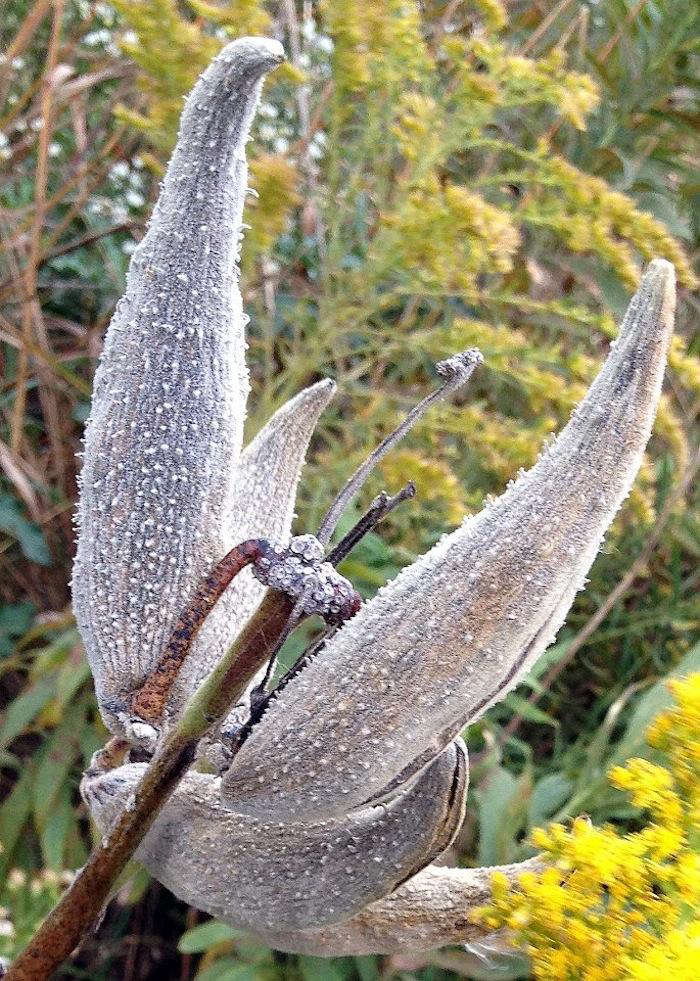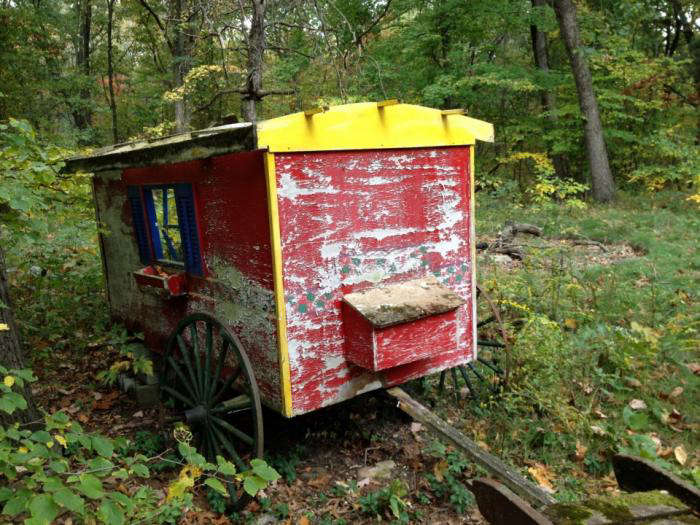A haunted house sighting, from a trusted source:
What good fortune, I think! My closing on a getaway cottage in one of my favorite places, the Indiana Dunes National Lakeshore, has coincided with my favorite seasons, autumn and Halloween. I find myself in Beverly Shores, Indiana (pop. 610, oops, now 611), a lakeside hamlet immersed in dense woods and famous as the home of a collection of 1933 Chicago World’s Fair “Century of Progress” homes. The houses were barged to the dune or lakefront after the fair ended. Most are being restored. How charming. Other local houses have not fared as well.
Photographs by Ron Reason.

Above: A 1949 Jacob Lustron house built years after the Chicago World’s Fair. Lustrons were quirky prefab homes, made of enameled steel, that became popular for a period after World War II, in response to the shortage of homes for returning soldiers. But not even the luminous grasses and the Technicolor leaves of the Dunes can cover up the mystery here: Why did the national park not preserve what must have once been a midcentury gem, just steps from one of the quietest stretches of Lake Michigan beach?

Above: I have a bog for a neighbor. On the plus side: no one can build on this area, or obstruct my views to the south. Thank you, Shirley Heinze Land Trust. These acres of swamp, trees, and grasses are part of the Great Marsh, the remains of a vast wetland that once ran along the shores of Lake Michigan from Gary to Michigan City. On a cloudy morning, one can almost imagine the hand of a long-buried corpse rising from the murky water.

Above: In the middle of the woods I come upon a decrepit circus wagon, waiting for Hansel and Gretel to approach. Despite an eerie vibe, I pause to contemplate: would one of these wagon wheels make the bones of a great coffee table?

Above: Having been raised among the farmlands of nearby La Porte, Indiana, I grew up fascinated by milkweed. Sticky and milky in summer, their pods turn to gnarled corpses in autumn, cracking open and releasing dried white seeds to the winds.

Above: Is it a playhouse? A storage shed? A shack for skinning squirrels, or worse? The remains of this odd structure sport an unusual identification near the doorway. Is this the former romper room of a little Rachel or Reginald? Or is it a warning, some kind of portent of doom? I don’t linger long to find out. (Nor do I, initialed with two R’s of my own, give in to the temptation to pilfer it for a door knocker at my new cottage.)

Above: The back of the lonely circus wagon. Needs a little friend?

Above: The view from the dunes. Not so spooky, after all.









Have a Question or Comment About This Post?
Join the conversation